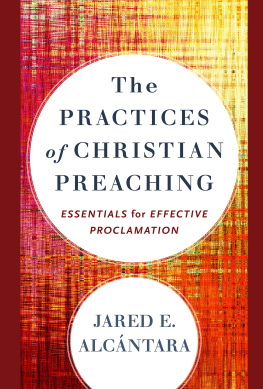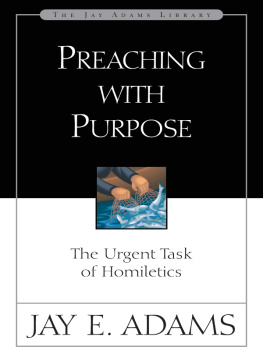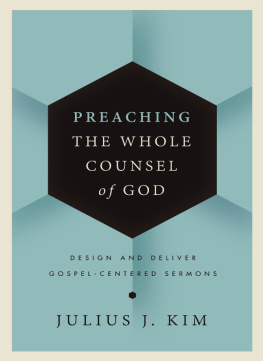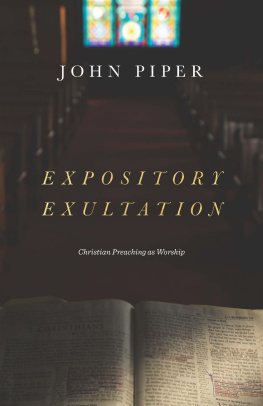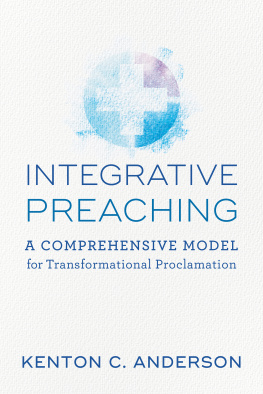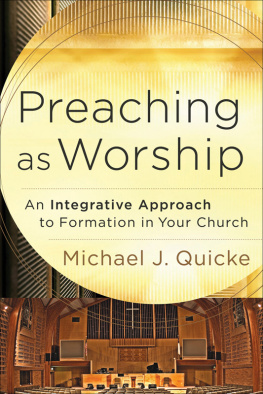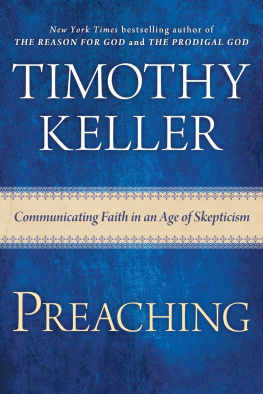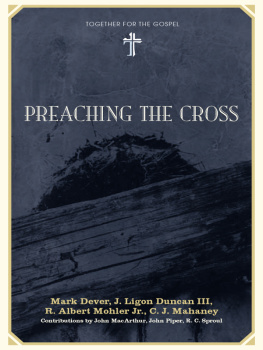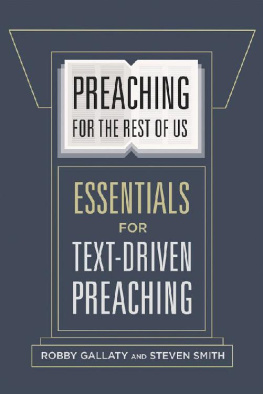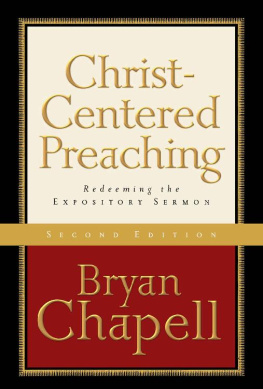1. Preach Christian Sermons
2. Preach Convictionally
3. Preach Contextually
4. Preach Clearly
5. Preach Concretely
6. Preach Creatively
Acknowledgments
M any of the concepts and frameworks in this project originated in an Introduction to Preaching class I taught in the fall of 2013 at Primitive Christian Church, a Latinx Protestant church in New York City. That is to say, the seeds took root some years ago. Thank you to the thirteen students who interacted with me on this material in its roughest and most untested version, and thank you to the many students (you know who you are) who have helped me to hone, clarify, and improve this material over time. You have taught me more than you realize.
Although most of the content in this book is new, some sections have been adapted from papers that I have delivered at academic meetings or articles that I have published. Some of my discussions concerning Pixar Animation Studios in my chapters on clarity and creativity have been adapted from an article that I published in Practical Matters in 2015, titled Fail Better: Or, What Can Teachers of Preaching Learn from Improvisational Performers and from Pixar? Also, some sections from my chapter on contextualization have been adapted from a paper that I presented at the Annual Meeting of the Academy of Homiletics in 2016, titled Teaching Contextual Responsiveness in a Preaching Classroom, and another paper that I presented at the Annual Meeting of the Evangelical Homiletics Society in 2017 titled Sermons with Local Soil: Cultivating Contextually Responsive Preachers. I am indebted to Paul Myrhe and my friends at the Wabash Center for Teaching and Learning for their willingness to fund a five-week special project that I conducted in the summer of 2016 on how to teach contextualization in a preaching classroom. Their support gave me the time and space to think, write, collaborate with other scholars, and test my ideas in homiletics classrooms during the 201617 school year. Finally, some sections from my chapter on creativity have been adapted from a paper that I delivered at the Annual Meeting of the Academy of Homiletics in 2018 titled Teaching Students How to Cultivate Creative Environments.
I would be remiss if I did not express my appreciation to colleagues at two different institutions. Thank you to President David Dockery, Dean Graham Cole, and the board of regents for approving my sabbatical for school year 201718 when I was still teaching at Trinity Evangelical Divinity School, where I served from 2014 to 2018. My sabbatical created much-needed time and space to finish this project. Thanks also to Peter Cha, who encouraged and strengthened me as a mentor, and to Greg Scharf, my friend and colleague in homiletics when I was at Trinity, who ensured that my classes and other responsibilities were covered when I was on sabbatical. I would also like to thank Dean Todd Still and my colleagues in homiletics, Joel Gregory and Scott Gibson, who serve alongside me now at Baylor Universitys George W. Truett Theological Seminary, where I started teaching in 2018. I am grateful for their ongoing support, friendship, feedback, and encouragement, and I am blessed by the ongoing collegiality and friendship that I enjoy with colleagues on the faculty at Truett.
I also owe a debt of gratitude to two granting agencies whose support helped bring this project to completion. The videography for this project was supported in part by funds from the university research committee and the vice provost for research at Baylor University. Thank you to our videographer, Matthew Aughtry, who worked tirelessly to record, edit, and produce the excellent video content that supplements this book. A Spanish language edition of The Practices of Christian Preaching is planned for release at a later date and is to be supported in part by the Foundation for the Advancement of Christianity. Thank you to Burton Patterson, the foundations director, who caught the vision for a multilingual resource and supported that vision.
Thank you to the entire team at Baker Academic. This book would not have been possible without your willingness to dream big at the beginning and provide support along the way! I especially want to thank Jim Kinney, Jeremy Wells, Christina Jasko, Julie Zahm, Brandy Scritchfield, and the many others who believed in this project from its inception in 2016, partnered with me to make it better, or provided much-needed help over a three-year journey. Thanks also to Pablo Jimnez and Thomas G. Long for reading drafts of this book and providing excellent feedback.
To the four excellent homileticians who collaborated with meJerusha Matsen Neal, Ahmi Lee, Kenyatta R. Gilbert, and Matthew D. Kimyour expertise, wisdom, insight, and investment made this resource better because of your involvement in it. I have so much respect, appreciation, and admiration for all of you. The academy and the church are better served because of your presence and ministry in both spaces.
Last but most certainly not least, I would like to thank my family, first and foremost my wife Jennifer, who, without a doubt, stands alone atop the list of those without whom this book would not be possible. Your sacrificial love, patience, cheerleading, and support helped me get through the long hours required for a multi-phase project like this one to come to fruition. I love you, respect you, and appreciate you! Thanks also to my parentsJos and Susanto my siblings, and to my extended family. I see the love and support you provide, and I do not take it for granted. I give thanks for it.
I dedicate this book to my three daughters: Maya, Liliana, and Evelyn. My prayer for you remains the same, that someday each one of you would become an eshet chayil that is, a woman of valor (Ruth 3:11) whose strength of character, courageous resilience, godly leadership, and bold action bless those around you and change the world.
Introduction
W hat does Charlie Parker have to do with preaching? The answer might surprise you. Parker rose to fame in the jazz music world in the late 1930s and, with Dizzy Gillespie, pioneered a new sound known as bebop. According to jazz historian Thomas Larson, Charlie Parkers legacy continues to shape jazz. It is almost impossible to escape his influence. Some claim that Parker is the greatest jazz musician who ever lived. On occasion, if a jazz musician from a country outside the United States performs boundary-crossing music, an expert might refer to that person as the Charlie Parker of [insert nation here].

